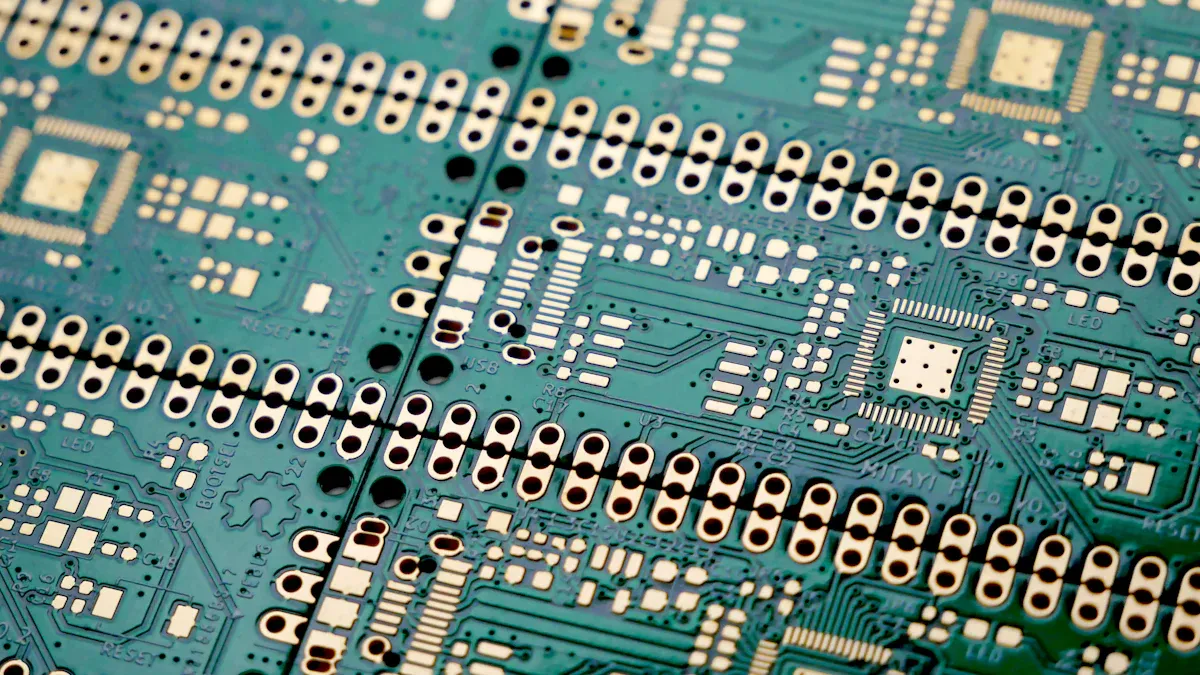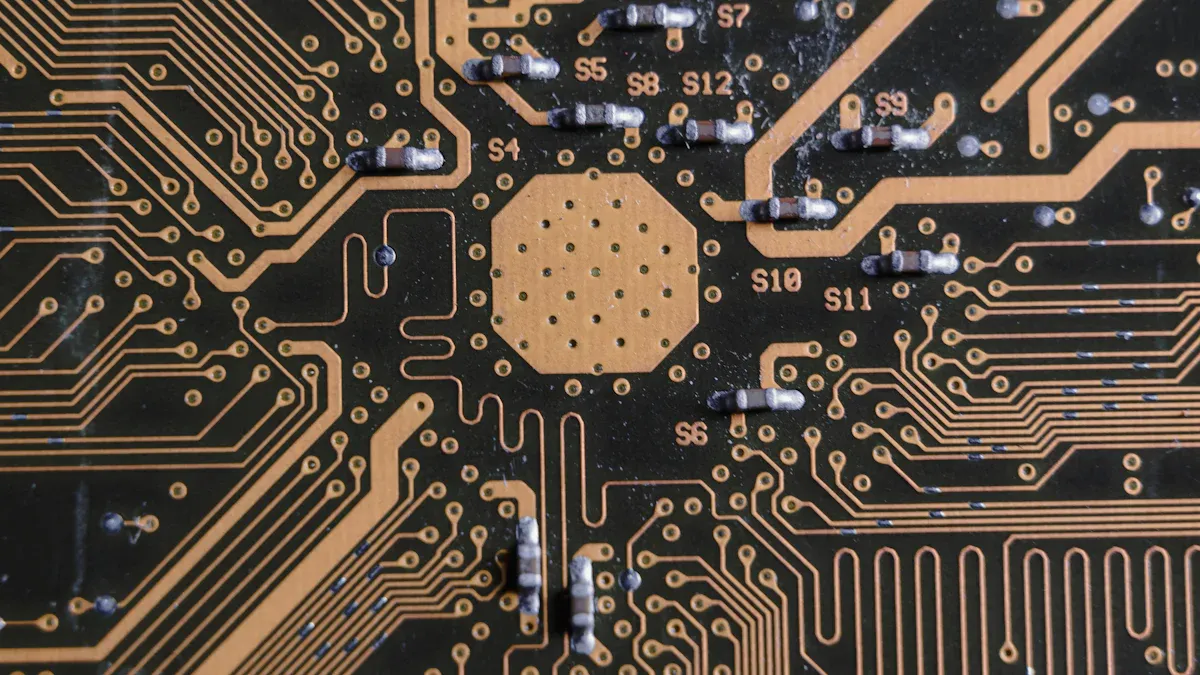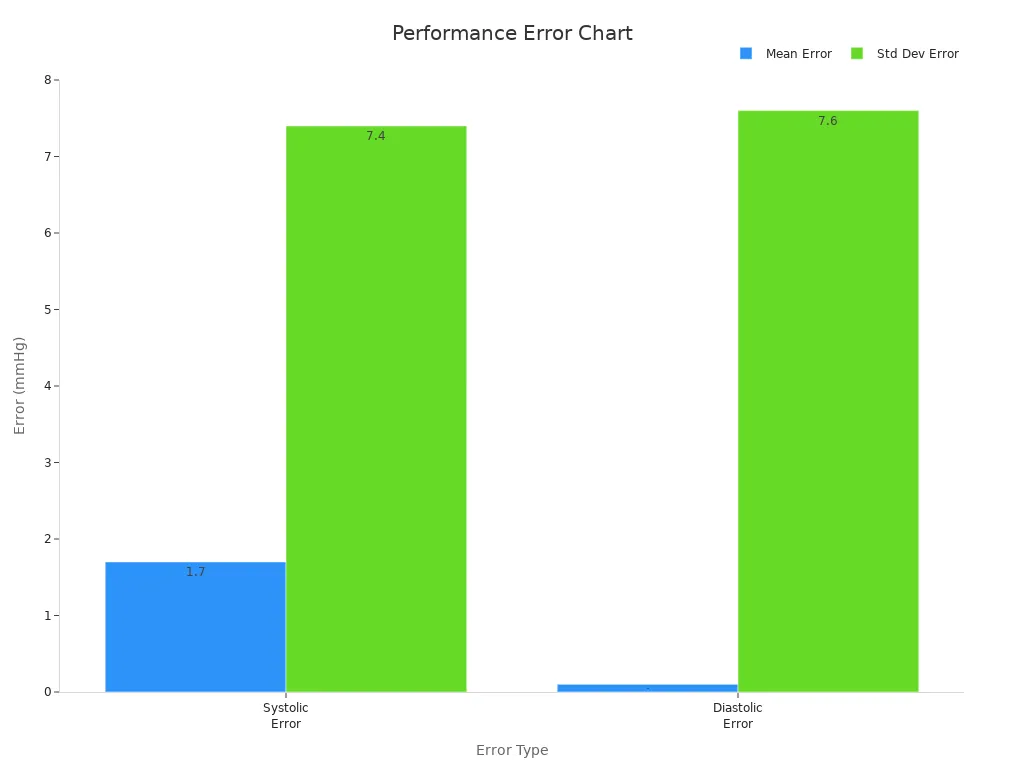Understanding Analog IC Design Basics and Applications

Analog IC design makes circuits that handle signals like sound and heat. These circuits help connect the real world to digital devices. For example, ADCs and DACs in phones turn real-world inputs into data. RF circuits improve wireless communication by controlling fast signals. Analog IC design links these areas to help in tech like healthcare and gadgets. It is very important for modern technology.
Key Takeaways
Analog ICs help connect real-world signals to digital devices. They are used in healthcare and communication.
Analog circuits use parts like transistors, resistors, capacitors, and op-amps. Each part has a special job.
Reducing noise is very important in analog design. Filters and good layouts make signals clearer and circuits work better.
Saving power is key for portable devices. Better designs mean longer battery life and improved performance.
Testing and building models are key steps in design. These steps find problems early and check ideas before making the final product.
Basics of Analog IC Design

Key Parts of Analog ICs
Analog ICs use key parts to handle continuous signals. These parts include transistors, resistors, capacitors, and inductors. Each part has a special job in the circuit. Transistors work as switches or amplifiers to control current. Resistors adjust voltage levels in the circuit. Capacitors and inductors store and release energy to keep the circuit steady.
One important part is the operational amplifier. It makes weak signals stronger, which is useful for sound and sensor tasks. Filters are also important. They clean up signals by removing unwanted noise. These parts help prepare signals for digital processing, like in analog-to-digital converters.
The need for analog circuits is growing fast. In 2023, the analog semiconductor market was worth $88.65 billion. By 2032, it might grow to $156.4 billion. This shows how important these parts are in electronics, like phones and cars.
How Analog and Digital IC Design Are Different
Analog and digital IC designs are very different. Analog ICs handle continuous signals but are more affected by noise. Digital ICs work with discrete signals, making them more precise and less noisy.
Feature | Digital IC Design | |
|---|---|---|
Noise | Affected by noise | Less affected by noise |
Precision | Less precise | Very precise |
Design difficulty | Harder to design | Easier to design |
Complexity | More complex | Less complex |
Power use | Uses less power | Uses more power |
Heat | Produces less heat | Produces more heat |
Design process | Needs deep knowledge | Often reuses existing designs |
Life span | Lasts about 10 years | Lasts 1 to 2 years |
Cost | Costs less | Costs more |
Data storage | Aging can cause noise issues | Noise-resistant over time |
Analog design needs strong knowledge of physics and circuits. You must think about noise, signal quality, and power use. Digital design is simpler because it reuses modules. Analog circuits are better for low-power and long-lasting uses, like medical tools and IoT devices.
Main Ideas in Analog Design
Three main ideas guide analog design: accuracy, reliability, and performance. Accuracy means the circuit copies the input signal correctly. This is important for tasks like signal processing, where small errors matter. Reliability ensures the circuit works well in different conditions, like temperature changes. Performance focuses on speed and saving energy.
For example, in mixed-signal designs, accuracy is key for good analog-to-digital conversion. Reliability ensures the circuit works even with changes in parts. Studies show better simulations can improve designs for higher performance.
By following these ideas, you can make analog ICs that meet today’s tech needs. Whether designing an amplifier or filter, these rules help you succeed.
Design Methodology in Analog IC Design
Top-Down Approach and Bottom-Up Verification
In analog IC design, the top-down method starts with the big picture. The system is divided into smaller parts, each with a role. This helps balance things like power, noise, and gain early. For example, studies on A/D converters and RF systems show this improves performance.
The bottom-up method checks each part before putting them together. This ensures every piece works well, reducing mistakes later. Using both methods makes a strong design process. It solves problems at both the system and part levels.
Tools and Techniques in Analog Design
Analog design uses special tools to handle complex signals. Circuit simulators, like SPICE, help test circuits before building them. Advanced tools, like CASE, check how parts wear out over time. The PDO model simulates changes in CMOS transistors.
These tools help study signal behavior closely. They make circuits more accurate and reliable. By using these tools, you can predict how circuits will work in different situations. This saves time and effort during design.
Importance of Simulation and Prototyping
Simulation and prototyping are very important in analog design. Simulations test designs virtually, finding problems early. Prototypes are physical models that prove ideas work. They are useful for new designs that are hard to simulate.
Prototypes also connect research to real-world use. For example, Microsoft’s Catapult project shows how prototypes can grow into big systems. Prototyping builds trust and attracts investors. It helps turn ideas into real products.
Key Considerations in Analog IC Design
Managing Noise and Signal Integrity
Noise can mess up how analog circuits work. It’s important to control it well. The noise floor is the lowest noise level in a system. Signals below this level mix with noise and lose clarity. Common noise types include:
Thermal noise from moving electrons.
Shot noise from uneven current flow.
Flicker noise in semiconductors.
Burst noise, which happens randomly and disrupts circuits.
To keep signals clear, try these methods:
Use filters to block unwanted noise.
Add shielding to stop outside interference.
Place parts carefully to avoid noise spreading.
These steps help signals stay strong and circuits work better.
Optimizing Power Efficiency
Saving power is very important in analog design. This is especially true for portable devices and IoT gadgets. You can save power by balancing energy use and performance. For example, a special amplifier uses just 5.2 mW of power. It runs on a 1-V supply and keeps noise low at 240 µVrms. Tools like CAD software help design energy-saving circuits. These tools are great for making mixed-signal circuits and converters.
By focusing on power, you can make designs that last longer and work well.
Ensuring Linearity and Precision
Linearity and precision are key for accurate signal processing. Better sensitivity and repeatability improve circuit performance. High-tech electronics can detect and measure signals precisely. This is important for tools like scientific instruments. Accurate designs allow faster data collection and handle a wider range of signals. This makes circuits more reliable and ready for modern needs.
By focusing on these points, you can build analog ICs that are reliable and perform well.
Applications of Analog ICs

Analog ICs are very important in many industries. They solve modern problems by handling continuous signals accurately. Below are examples of how analog ICs help in wireless systems, medical tools, and audio devices.
RF Communications and Wireless Systems
Analog ICs are key in wireless communication. They boost weak signals, remove noise, and send data reliably. For example, in 5G networks, they keep signals clear for smooth connections. They also save energy, which is important for phones and IoT devices.
Voltage regulators are important in these systems. They keep power steady and improve performance. Using analog design can save energy and reduce heat. This makes analog ICs essential for today’s wireless technology.
Medical Devices and Sensor Interfaces
Analog ICs are vital in medical tools where accuracy matters. They process signals from sensors, like those for heart rate or blood pressure. For example, in blood pressure monitors, they reduce noise for accurate readings.
Studies show how well analog ICs work in sensors. The table below shows blood pressure measurement accuracy:
Metric | Value | Regulatory Limit |
|---|---|---|
Systolic Error | ||
Std Dev = 7.4mmHg | ||
Diastolic Error | Mean = 0.1mmHg | |
Std Dev = 7.6mmHg |

Adding analog ICs to medical devices improves their accuracy. This helps patients and supports better healthcare technology.
Audio Processing and Power Management
Analog ICs make audio sound clear and high-quality. They amplify sound, reduce distortion, and cancel noise. This is important for music production and good listening experiences.
Analog ICs also help manage power in audio devices. Voltage regulators save energy and make batteries last longer. Tests show big improvements in power efficiency for different uses:
Application Type | Power Efficiency Improvement |
|---|---|
Vector Matrix Multipliers (VMM) | |
CMOS imagers with computation on the pixel plane | 1000 to 10,000 times |
Large-Scale Field Programmable Analog Arrays (FPAA) | 1000 to 10,000 times |
These improvements show how analog ICs can transform audio and power systems. By focusing on analog design, you can create efficient and high-performing devices.
Challenges and Solutions in Analog IC Design
Fixing Signal Problems
Signal problems are a big challenge in analog circuits. Noise and interference can hurt performance, especially with fast signals. You can fix this by using smart design methods. For example:
Adding shields blocks electromagnetic interference.
Good grounding reduces noise from spreading.
Filters are also very helpful. High-pass filters block low noises, and low-pass filters block high noises. Careful circuit layouts stop parts from interfering with each other. These steps make circuits work better and more reliably.
Handling Manufacturing Differences
Making analog ICs can lead to differences in performance. Changes in materials or processes can cause problems. To solve this, use statistical models. These models predict how changes affect circuits. A study shows granular functions help meet design goals more accurately.
Quality checks, like testing for defects, also help. By adding these steps, you can make sure all circuits work well and stay consistent.
Balancing Cost, Performance, and Reliability
It’s hard to balance cost, performance, and reliability in analog design. You need to make smart choices to get the best results. For example:
Low-voltage circuits work well without expensive changes.
Some parts use less power, great for portable devices.
Prototypes show new ways to improve designs while saving money.
Here’s a table showing key points:
Aspect | What It Means |
|---|---|
Circuit Testing | Better designs through testing and improving manufacturing. |
Cost Study | Looks at testing costs and production data. |
Reliability Checks | Finds defects and ensures circuits work well over time. |
By using these ideas, you can design analog ICs that are efficient, reliable, and affordable.
Analog IC design is very important in today’s technology. It processes real-time signals, making it key for audio, power, and IoT devices. Smaller gadgets and car tech are pushing its growth.
Experts say the market will grow by $17.12 billion from 2025 to 2029. This is due to new tech like 5G and AI tools.
Problems like tricky designs and high costs lead to smarter methods and mixed solutions.
Small size and low power use make analog ICs perfect for gadgets and cars.
Using new ideas and tools can help create better electronics for the future.
FAQ
What is the main difference between analog and digital ICs?
Analog ICs work with smooth signals, like sound or heat. Digital ICs handle step-like signals, like binary numbers. Analog ICs focus on clear signals and reducing noise. Digital ICs aim for accuracy and fast processing.
Why is noise management important in analog IC design?
Noise can make signals unclear in analog circuits. Controlling noise keeps signals accurate and reliable. This is very important for devices like medical tools or audio systems. Filters and shields help reduce noise problems.
How do analog ICs improve power efficiency?
Analog ICs save energy by balancing power use and performance. They use low-power designs, like special amplifiers and voltage controllers. These designs help batteries last longer in portable gadgets and IoT devices.
What tools are commonly used in analog IC design?
Designers use simulators like SPICE to test circuits virtually. CAD tools help plan and improve circuit layouts. These tools find problems early and make circuits more reliable before building them.
Where are analog ICs most commonly used?
Analog ICs are used in wireless tech, medical tools, and audio devices. They boost signals, control power, and process sensor data. This makes them important for phones, healthcare equipment, and great sound systems.
See Also
Emerging Developments Influencing Analog IC Sector By 2025
Understanding Communication Chips: Functionality And Operation Insights
Essential MOSFET Fundamentals Every Electronics Hobbyist Should Know
Exploring How Chip Shortages Affect Avionics System Performance
Addressing Obstacles in Wireless Communication for Military Applications
